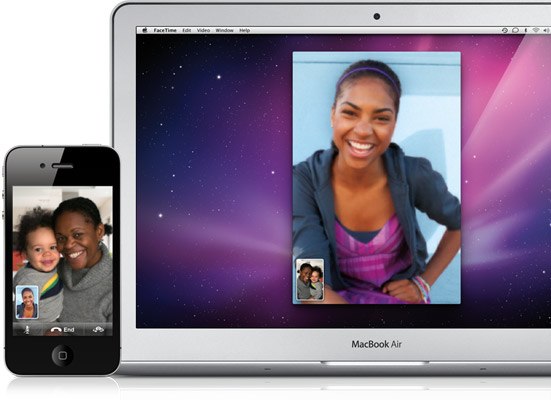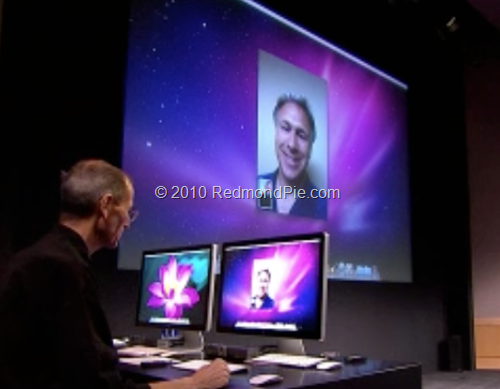- Facetime For Mac Os X
- Screen Share Facetime Mac
- Facetime For Mac Os X 10.6
- Facetime For Mac Os X
- Mac Facetime Not Working
The question everyone asked when they first saw FaceTime for the iPhone 4 was, “When will this be available in iChat on the Mac?” The answer came at last week’s media event: never (or at least not now). Instead, Apple CEO Steve Jobs demonstrated a separate FaceTime program for Mac OS X that works with the iPhone 4 and fourth-generation iPod touch. Steve Jobs said 19 million iOS devices with which you can use FaceTime have already been sold. A beta release for Mac is already available for testing, and no restart is required after installation. You need Mac OS X 10.6.4 and—obviously—a camera-equipped Mac.
- Apple's FaceTime on Mac OS X, Windows. A French Web site, Mac4Ever, posted a short article claiming the Cupertino computer crafters are creating software for Mac OS X, presumably an update to.
- Fixes an issue where Mac computers running macOS Catalina 10.15.4 could not participate in FaceTime calls with devices running iOS 9.3.6 and earlier or OS X El Capitan 10.11.6 and earlier.
- While FaceTime is built into OS X 10.7 and above, it is available for installation on Snow Leopard systems as a 99 cent purchase from the Mac App Store. Therefore, if you have Snow Leopard then go to the store and download the update from the FaceTime page ( direct link here ), and install it.
After installing FaceTime and launching it, you’re prompted to log in with an Apple ID, which is the same ID used to purchase items from the Apple Store and iTunes Store. If you don’t have such an account, you can create an identity entirely within the program. With an account, enter your credentials and click Sign In. (At initial release, the beta had a glaring security hole, as reported by Macnotes. Once logged in, anyone who wandered by your computer could access your Apple ID account settings, such as birth date and secret question/answer pair. Apple fixed the problem on the server side several days later.)
FaceTime has just been announced at “Back to the Mac” event. It’s only coming for OS X though. So there will only be iPod touch 4G to iPhone 4 to OS X-based devices based. It won’t be integrated into iChat. There is an entirely separate app called FaceTime for the Mac. FaceTime is a lightweight Mac OS X application that enables you to talk and view your friends and family via their iPhone, iPad, iPod touch or Mac computer. Simple and clean interface From FaceTime’s user-friendly interface you can quickly login with your Apple ID and make video calls to contacts from your list that use FaceTime on their Mac.

To let you be discoverable to others, FaceTime for Mac asks you to choose what email address you associated with your FaceTime access. In iOS, this appears to be implicit, as there’s no way to choose how your iPhone or iPod touch is associated. You can add additional email addresses later through FaceTime > Preferences > Add Another Email.
FaceTime calls can be accepted when the app isn’t running, but you can disable that in preferences, too. Set the FaceTime On/Off switch to Off. You can accept or reject individual calls, of course.
After accepting or entering an address, click Next, and your contact list appears. Three buttons at the bottom right of the screen let you choose among Favorites set in the program, Recents for recent connections, and Contacts, which is selected by default.
Your face appears in a large preview window shaped with the same proportions as an iPhone or iPod touch in portrait orientation if you have a built-in iSight or (as I do) an external FireWire iSight camera. (I apologize for not shaving in the screenshot.) Select a contact, and then click either an email address or a mobile phone number that you believe to be associated with an iPhone 4, and the program tries to make a connection. (You can have only one-to-one conversations, unlike iChat, which allows multiple-person audio and video chats.)

Facetime For Mac Os X
After connecting to the other party, FaceTime for Mac shrinks the view of you down into a corner of the screen, as in the iOS version. With iOS, you can rotate your device to change the orientation of the video you’re sending. On the Mac, you hover over your image, and click the rotate button. This reframes the image from the iSight into a landscape format. If the other party does the same on the Mac or rotates the iOS device, the full FaceTime window changes to landscape, too. FaceTime in iOS shows whateverorientation you’ve chosen on the other end.
Screen Share Facetime Mac
iOS device users can swap the front and back cameras to show off, for instance, theirmarvelous front yards. FaceTime for Mac allows only audio muting; iOS users can press the Home button or double-press it to switch into another app, and the video is paused while audio continues to work.
Since this is a beta, I wasn’t surprised to see a couple of glitches. I was unable to get full-screen mode to work. And in talking with Adam Engst, his video transmission wound up locked in an orientation 90 degrees off how he was holding his phone.
Will FaceTime replace iChat? Certainly not in this first iteration. iChat allows multiple parties to chat, maintains its own buddies list, allows access to you only when you’re logged in, and includes text chat and screen sharing, among other features. On the other hand, FaceTime requires no configuration after you log in with your Apple ID, relies on your existing contacts, and uses phone numbers and email to make connections. That’s appealing to users who don’t want buddies and account status and othernonsense required in instant messaging networks.
But I can see Apple trying to divest itself of iChat over time by adding more features to FaceTime for Mac. Apple is dependent on AOL Instant Messenger (AIM) for the underlying buddy and connection components of iChat with MobileMe. iChat also works with Google Talk and Jabber servers, including Mac OS X Server’s version of Jabber. But that’s all a bit out of Apple’s control, and we all know how much Apple hates being reliant on other companies.
Part of the case for that transition is that the MacBook Air comes with a “FaceTime camera”; the iSight name only appears on older models. Over time, I can’t see Apple supporting iChat and FaceTime as separate and unequal models of communication. By the time Mac OS X Lion roars, FaceTime and iChat might be chimerically molded together.
It happened again. The tech world came to a screeching halt as Steve Jobs and Apple made some more announcements from their headquarters in Cupertino, California. Today, Apple unveiled some new products, including iLife 11, FaceTime for Mac, OS X Lion and brand new MacBook Airs.
The presentation began with a “State of the Mac” wrap-up, including revenue numbers and market-share stats. The Mac accounts for a third of Apple’s revenue, and the Mac install base is roughly one fifth of the PC market at just under 50 million users.
For products, Apple showcased iLife 11 – a refresh to the familiar suite of multimedia applications. iPhoto features some new social sharing, slideshow and printing options, and iMovie now includes improved audio editing, quick on-the-fly video effects and a movie trailer storyboarding and creation tool. Garage Band, Apple’s music creation and edition software, now includes groove matching (think auto-tune but for poor rhythm) and improved music lessons.
Next, Steve Jobs announced that Apple has created a desktop client for FaceTime, the video chat technology built into the iPhone 4 and the latest iPod Touch. Now any Mac desktop user can video chat with owners of these devices, and vice versa.
The “entrée” for the presentation, as Jobs calls it, is an upgrade to Mac OS X, dubbed “Lion.” Lion is OS X meets iOS, as enhanced multitouch and the app store are coming to the desktop. One feature, Launch Pad, allows desktop users to quickly access and arrange apps in the same way they do on an iPad, including the creation of app folders.
To wrap up the presentation, however, Jobs unveiled brand new MacBook Airs – yes, two of them – a 13-inch and an 11-inch version. The new Airs are super thin (only .68” at their thickest), feature hi-res LED displays, and no optical or hard drives. They use Flash-based storage to provide and instant-on, and enhanced battery performance (as much as 7 hours “Wireless Web” use, and 30 days of standby).
Prices for the MacBook Air start at $999 for the 11” with just 64GB of storage and a 1.4 GHz processor, and reach as high as $1599 for 256 GB and 1.86 GHz. They are available today.
Facetime For Mac Os X 10.6
So will you be buying the new MacBook Air(s)? Personally I’m not completely sold on them. $999 for that little storage/processor speed is a bit disappointing, but there’s no doubt some customers will be attracted by the slim design and battery potential – though who REALLY needs a whole month of standby time?
Facetime For Mac Os X

Mac Facetime Not Working
Let us know your thoughts on today’s announcements in the comments!
